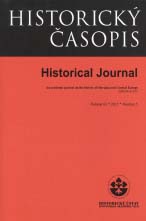The image of the werewolf in medieval literature
The image of the werewolf in medieval literature
Author(s): Peter BystrickýSubject(s): Language and Literature Studies, Studies of Literature, Middle Ages, Comparative Study of Literature
Published by: SAV - Slovenská akadémia vied - Historický ústav SAV
Keywords: Werewolf; Wolf; Middle Ages; Literature; Transformation; Lycanthropy;
Summary/Abstract: The subject of the study is the transformation of humans into wolves in medieval chivalric romances, rhymed tales (lais), educational works, Norse sagas, Russian literature and Serbian folk songs. The medieval idea of a werewolf was anatomically an ordinary wolf, but it retained human memory, mind, habits and upbringing. People, almost always men, became wolves either voluntarily with help from magic, wolf skin or enchanted objects such as rings, or involuntarily when somebody cursed or betrayed them. In medieval chivalrous literature, the traitor was always a woman, either a malicious wife or jealous step-mother. One of the conditions for a werewolf’s return to human form was clothes, a motif already found in the antiquity. Werewolves with cyclical transformations hid their clothes, because without them they would remain wolves until the end of their lives. The details of transformation into wolves in the Primary Chronicle, Russian heroic poems (byliny) or Serbian folklore are not known, but the circumstances indicate that this ability was attributed to wizards and heroes.
Journal: Historický časopis
- Issue Year: 63/2015
- Issue No: 5
- Page Range: 787-812
- Page Count: 26
- Language: English

